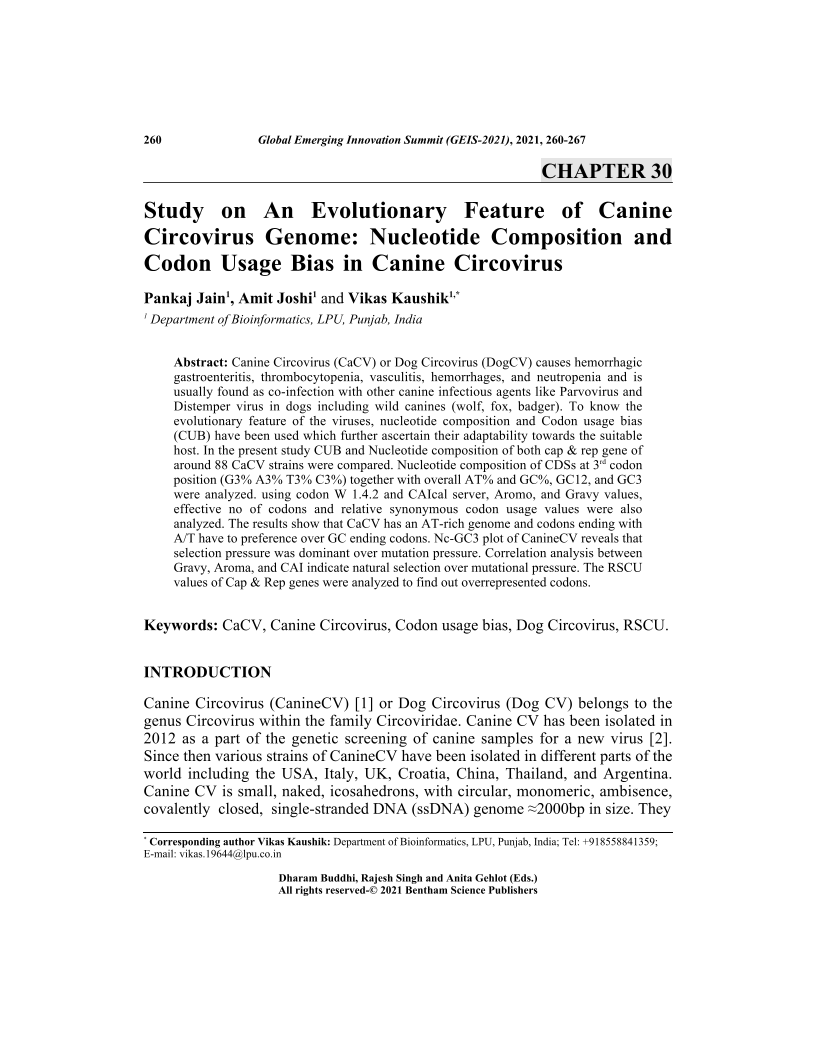oa Study on An Evolutionary Feature of Canine Circovirus Genome: Nucleotide Composition and Codon Usage Bias in Canine Circovirus

- Authors: Pankaj Jain1, Amit Joshi2, Vikas Kaushik3
-
View Affiliations Hide AffiliationsAffiliations: 1 Department of Bioinformatics, LPU, Punjab, India 2 Department of Bioinformatics, LPU, Punjab, India 3 Department of Bioinformatics, LPU, Punjab, India
- Source: Global Emerging Innovation Summit (GEIS-2021) , pp 260-267
- Publication Date: November 2021
- Language: English
Study on An Evolutionary Feature of Canine Circovirus Genome: Nucleotide Composition and Codon Usage Bias in Canine Circovirus, Page 1 of 1
< Previous page | Next page > /docserver/preview/fulltext/9781681089010/chapter-30-1.gif
Canine Circovirus (CaCV) or Dog Circovirus (DogCV) causes hemorrhagic gastroenteritis, thrombocytopenia, vasculitis, hemorrhages, and neutropenia and is usually found as co-infection with other canine infectious agents like Parvovirus and Distemper virus in dogs including wild canines (wolf, fox, badger). To know the evolutionary feature of the viruses, nucleotide composition and Codon usage bias (CUB) have been used which further ascertain their adaptability towards the suitable host. In the present study CUB and Nucleotide composition of both cap & rep gene of around 88 CaCV strains were compared. Nucleotide composition of CDSs at 3rd codon position (G3% A3% T3% C3%) together with overall AT% and GC%, GC12, and GC3 were analyzed. using codon W 1.4.2 and CAIcal server, Aromo, and Gravy values, effective no of codons and relative synonymous codon usage values were also analyzed. The results show that CaCV has an AT-rich genome and codons ending with A/T have to preference over GC ending codons. Nc-GC3 plot of CanineCV reveals that selection pressure was dominant over mutation pressure. Correlation analysis between Gravy, Aroma, and CAI indicate natural selection over mutational pressure. The RSCU values of Cap & Rep genes were analyzed to find out overrepresented codons.
-
From This Site
/content/books/9781681089010.chapter-30dcterms_subject,pub_keyword-contentType:Journal105

